Right
12 Things Your Poop Says About Your Health
In the 21st century, we have finally understood that watching our health is important. Yet we often forget to pay attention to the signals our body sends us. Have you ever analyzed your stool? As gross as it may sound, its color and shape can reveal a lot about your health.
Bright Side has collected information that may help you take another step toward good health. Read until the end, and stay informed!
Poop color
As you probably know, the normal color of stool is brown. It may vary slightly from time to time depending on what you eat, but a sudden color change for no obvious reason can be a warning sign. So let's find out what's what.
1. White
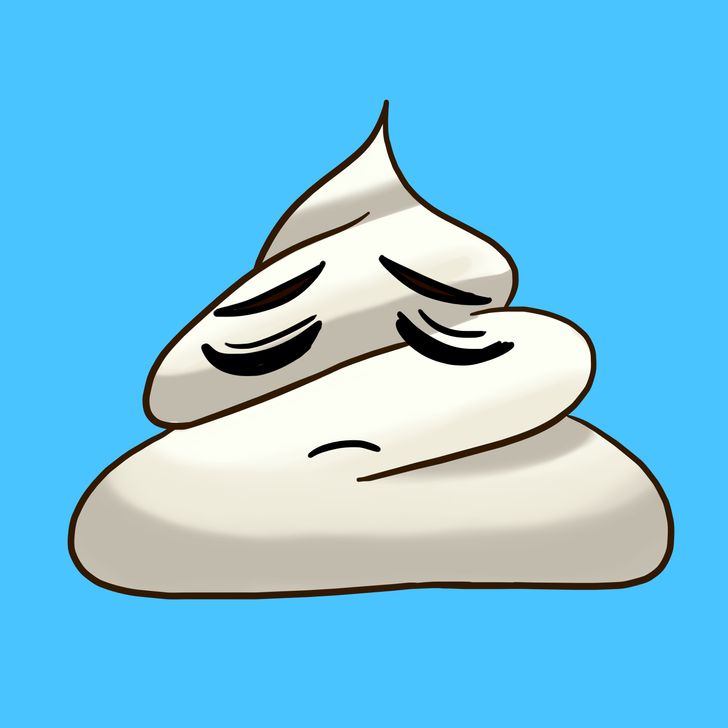
Whitish, grayish, or clay-colored stool indicates a lack of bile. It may hint at problems with the liver and gallbladder as these are organs where bile is produced and stored. It can be anything from blocked bile ducts and gallstones to cirrhosis.
White mucus on brown stool may be a sign of Crohn's disease.
2. Green
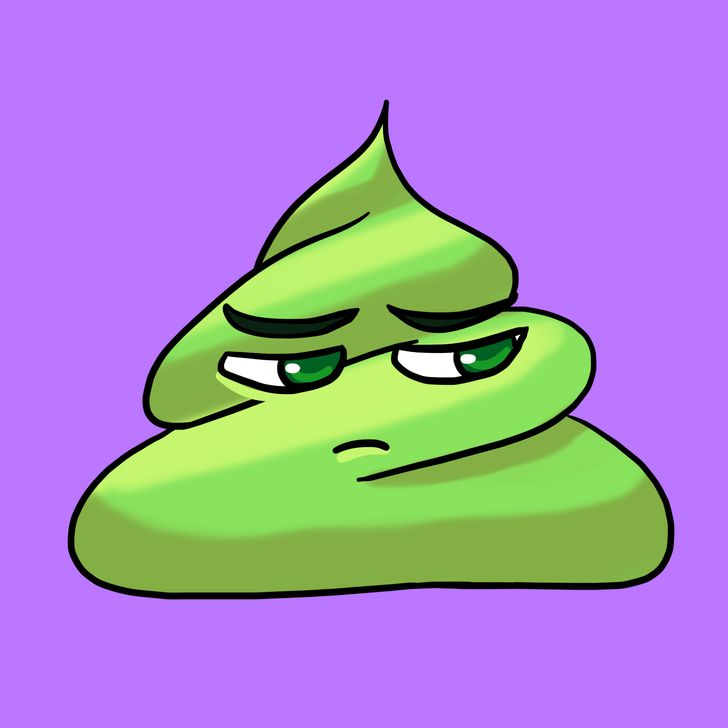
A green color may be caused by the consumption of vegetables rich in chlorophyll (like spinach), green food coloring in drinks, and iron supplements.
If food is not the reason, it means your stool passed the digestive tract too quickly and didn't have time to get enough bile and bilirubin.
3. Yellow

Yellow stool can be a sign of blocked bile ducts and poor fat absorption. Another reason is a lack of enzymes produced by the pancreas, which may hint at chronic pancreatitis, celiac disease, and cystic fibrosis.
But don't panic! Yellow poop can also be a sign that you ate too many carrots or had lots of yellow-colored drinks.
4. Black

Black stool may appear because of medicine intake (like aspirin, ibuprofen, and iron supplements) or bleeding in the intestines. The latter is obviously a reason to contact your doctor immediately.
A more common cause lies in the food you eat. Black and blue foods, like blueberries or licorice, can give this shade.
5. Red
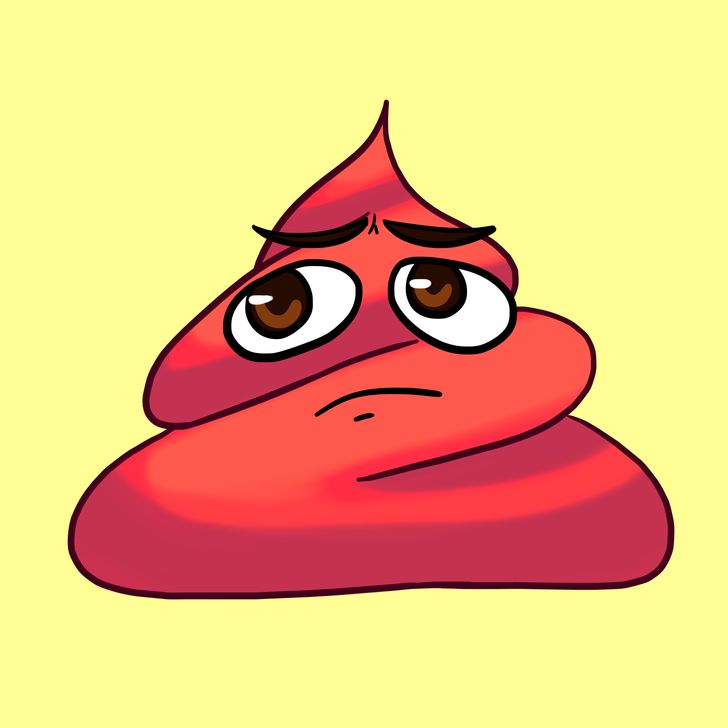
Red stool is usually influenced by your diet. Beets, colored drinks, tomatoes...just think about what you have consumed recently.
However, if food is not the cause, it's time to call your doctor. Blood in your poop is an alarming sign. It may be an anal fissure or something more serious like hemorrhoids, ulcerative colitis, or even cancer.
Poop shape
If you still don't believe that watching your stool is normal, some scientific research may convince you. To distinguish the types of poop and help people stay healthy, scientists from the Bristol Royal Infirmary created the Bristol stool chart. It describes 7 types of feces and what they mean.
1.
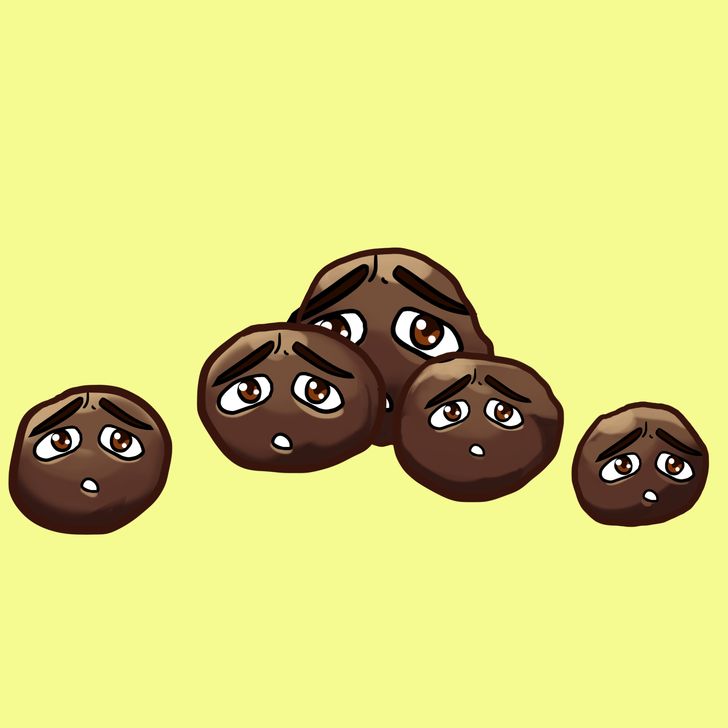
Appearance: Separate solid lumps reminiscent of nuts or goat feces.
Meaning: Severe constipation.
This type of stool means your body lacks fiber. To fix it, try to consume more fiber-rich products like wholewheat pasta, raspberries, and lentils.
2.
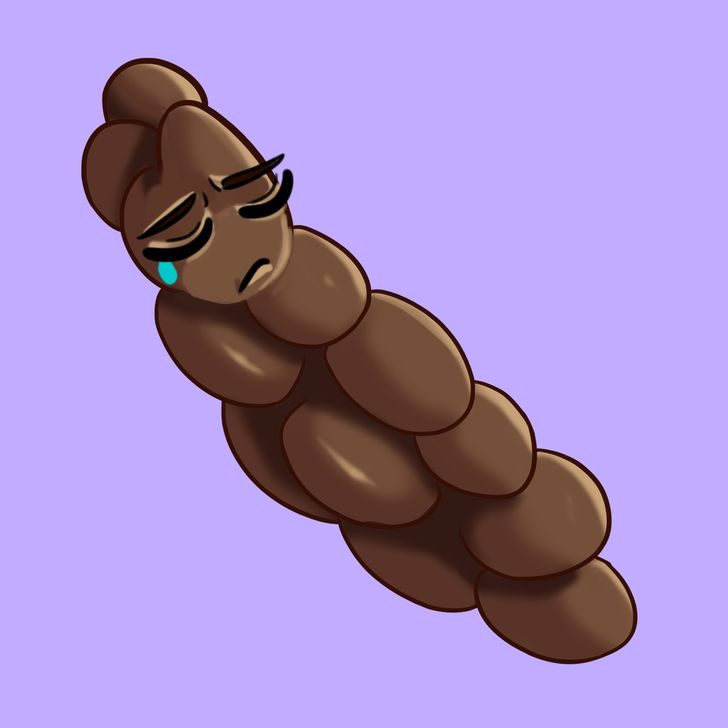
Appearance: Sausage-shaped, large, and lumpy.
Meaning: Constipation.
This type of stool is also caused by a lack of fiber. Nondietary reasons for constipation may include long-term antidiarrhea medicine intake and lack of physical activity. The advice is to eat more fruits and vegetables and perform exercises.
3.
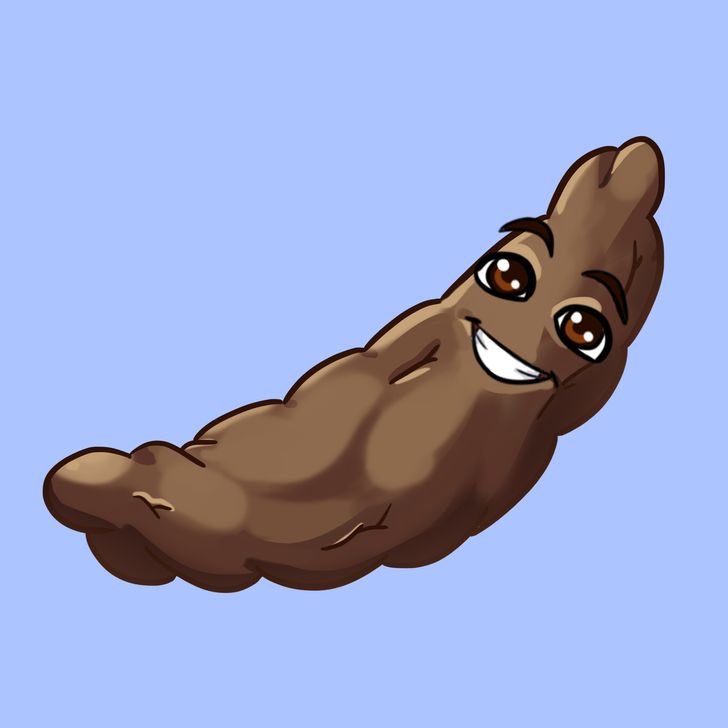
Appearance: A cracked sausage-shaped poop.
Meaning: Normal stool.
You're doing just fine! Don't forget to walk and drink more water.
4.

Appearance: Soft, sausage-shaped, and smooth.
Meaning: Perfect stool.
Try to maintain a balanced diet, and avoid stressful situations to keep things as great as they are.
5.
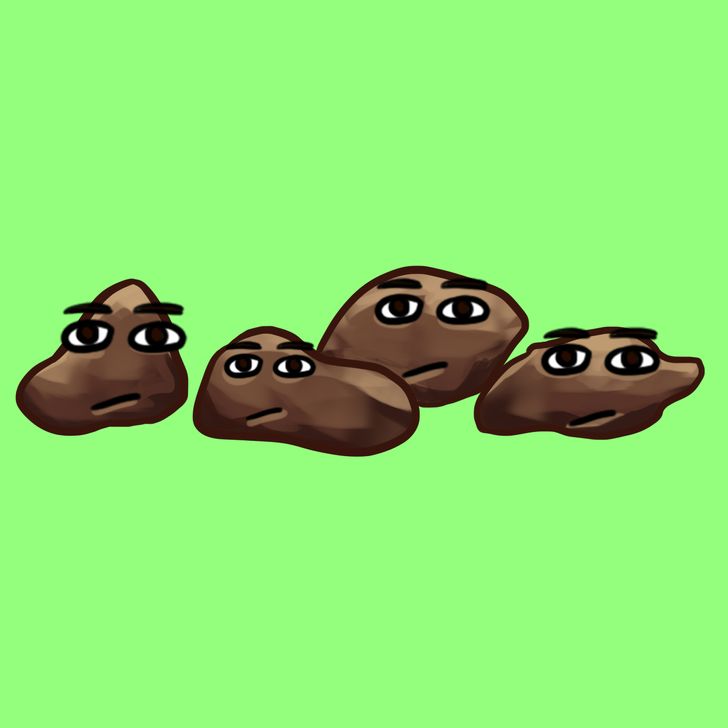
Appearance: Soft lumps with clear edges.
Meaning: Light diarrhea.
It may also be a sign of irritable bowel syndrome. To make it better, try eating low-fiber foods like bananas, crackers, and potatoes.
6.
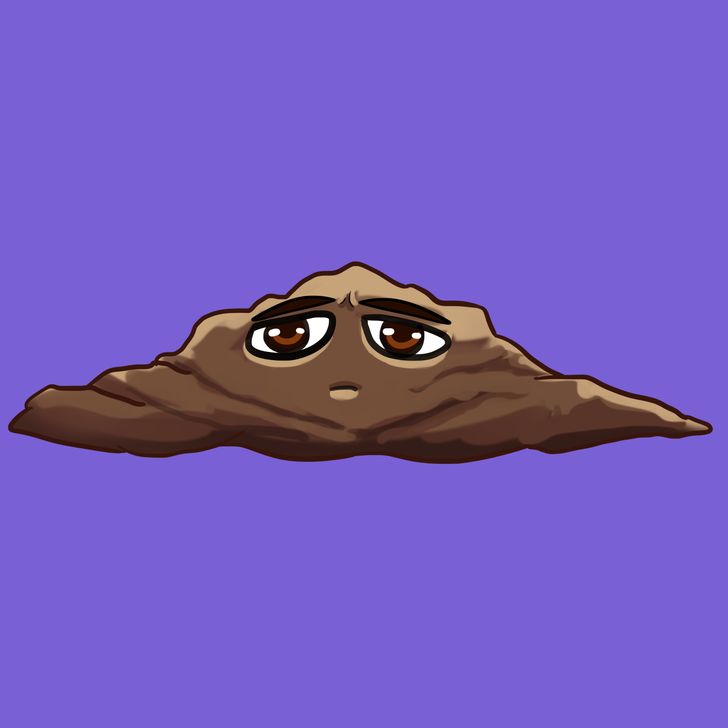
Appearance: Fluffy pieces with ragged edges.
Meaning: Mild diarrhea.
Maybe there's too much fiber in your diet. Drink more to avoid dehydration, and stick to boiled potatoes and bananas. You may also want to try some OTC, like Imodium or Pepto-Bismol. If the problem lasts more than 2 days, consult a doctor.
7.
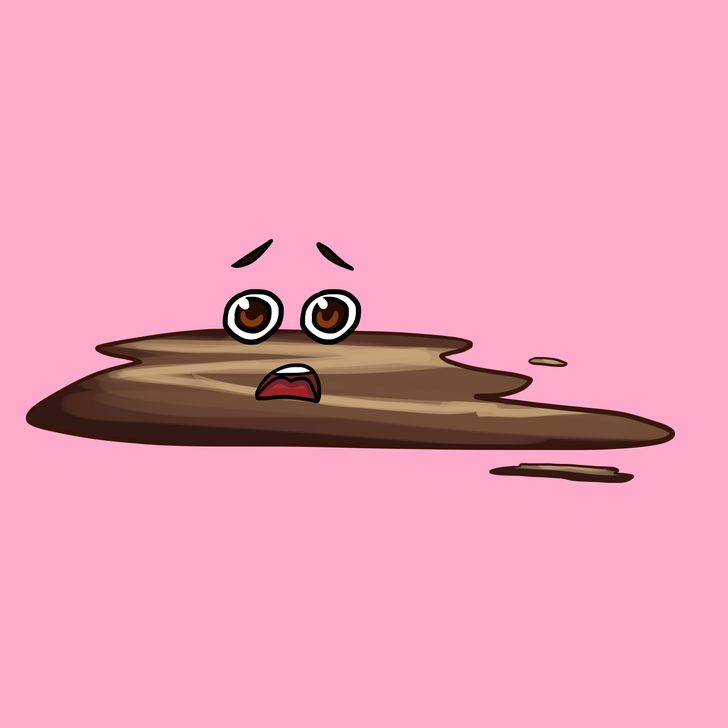
Appearance: Liquid without solid pieces.
Meaning: Severe diarrhea.
This may be a sign of food poisoning, lactose intolerance, bacterial infection, or medicine intake. Drink plenty of water to fight dehydration, and try over-the-counter medications. If the symptoms don't disappear in 2 days or if you feel pain, consult a doctor.
So how attentive are you to the changes in your body? Do you consult doctors when needed? Or do you try to cope on your own? Share in the comments below!
Comments
Ew
I'm not sure if I'm fine or have mild constipation.
ya YEET
I’m This
Appearance: Separate solid lumps reminiscent of nuts or goat feces.
And Regular Brown So I Just Need To Eat More Pasta?
Related Reads
7 Body Parts You’ve Been Cleaning Wrong Your Whole Life

7 Facts About the Female Body That Very Few People Know About
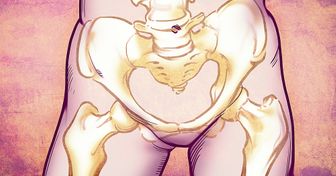
What Might Happen to Your Body If You Drink the Right Amount of Water Every Day
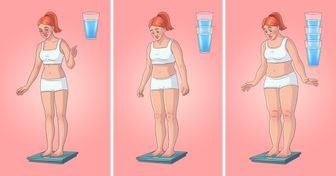
20 Real-Life Stories That Are More Chilling Than a Stephen King Novel

15 Secrets That Were Carefully Hidden in Popular Cartoons

10 Advantages and Risks You Might Face If You Give Birth in Your 20s vs Your 30s

8 Ways to Deal With Difficult People Everyone Should Know About

20+ Girls Who Decided to Get Plastic Surgery and Proved There Are No Limits When It Comes to Perfection

15 People Who Give Off Positive Vibes Even When Life Gives Them a Bitter Pill

“Screams Desperation,” Nicole Kidman, 56, Stuns in a Risqué Dress, But People Say It’s Not Age-Appropriate

Zac Efron’s Appearance a Few Days Ago Leaves Fans Shocked and Worried

Salma Hayek Celebrates “Bikini Day” in a String Swimsuit That Left Us Stunned
